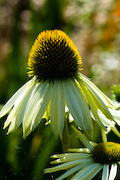Flushed with the success of actually completing a nature survey last year (Bumble Bee Conservation’s Bee Walk) I decided to start the New Year off with more naturing and decided to look for flowering plants to submit to BSBI ‘s New Year Plant Hunt. I’d had a bit of a look round Daventry last week and saw quite a few plants in flower including daisies and clover so I was hopeful it wouldn’t be a complete dud.
I should mention, that I am at least as bad at recognising plants as I am bees, but I took my camera with me to get some shots so I stood a slight chance of finding out what they were at some point. Unfortunately, a lot of the shots were not very good, but I still managed an ID of all the plants. Final count was 15! Not bad for an hour of looking around housing estates in Daventry really. (I also found a couple of mushrooms as well that I am hoping I have ID’d).
These are two of the shots I’m not ashamed of, first Blackthorn flowering over two months earlier than I would have expected and then a plant I have seen quite often but never recognised; green alakanet. I had thought it was a member of the speedwell family, but it isn’t. I am not surprised to discover it is a member of the Borage family – I thought those leaves looked familiar!
The full list of flowers that I found is as follows:
- Common Daisy
- Common Dandelion
- White Dead Nettle
- Red Dead Nettle
- Common Groundsel
- Common Ragwort
- Common Whitlow Grass
- Common Field Speedwell
- Green Alkanet
- Creeping Buttercup
- Common Mouse Ear
- Common Bittercress
- Shepherd’s Purse
- Blackthorn
- Smooth Sow Thistle.
The word common means that these should not be a surprise, but I have learned the names of 5 new flowers already and it is only the second of January!







